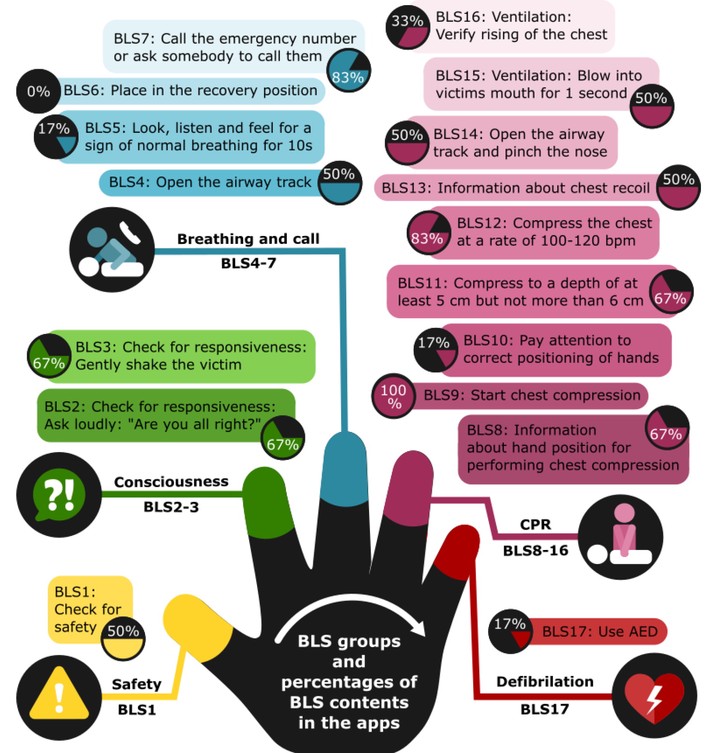Evaluating Quality, Usability, Evidence-Based Content, and Gamification Features in Mobile Learning Apps Designed to Teach Children Basic Life Support: Systematic Search in App Stores and Content Analysis
 Image credit: JMIR
Image credit: JMIR
Abstract
Background: Globally, 3.7 million people die of sudden cardiac death annually. Following the World Health Organization endorsement of the Kids Save Lives statements, initiatives to train school-age children in basic life support (BLS) have been widespread. Mobile phone apps, combined with gamification, represent an opportunity for including mobile learning (m-learning) in teaching schoolchildren BLS as an additional teaching method; however, the quality of these apps is questionable. Objective: This study aims to systematically evaluate the quality, usability, evidence-based content, and gamification features (GFs) of commercially available m-learning apps for teaching guideline-directed BLS knowledge and skills to school-aged children. Methods: We searched the Google Play Store and Apple iOS App Store using multiple terms (eg, cardiopulmonary resuscitation [CPR] or BLS). Apps meeting the inclusion criteria were evaluated by 15 emergency health care professionals using the user version of the Mobile Application Rating Scale and System Usability Scale. We modified a five-finger mnemonic for teaching schoolchildren BLS and reviewed the apps’ BLS content using standardized criteria based on three CPR guidelines. GFs in the apps were evaluated using a gamification taxonomy. Results: Of the 1207 potentially relevant apps, only 6 (0.49%) met the inclusion criteria. Most apps were excluded because the content was not related to teaching schoolchildren BLS. The mean total scores for the user version of the Mobile Application Rating Scale and System Usability Scale score were 3.2/5 points (95% CI 3.0-3.4) and 47.1/100 points (95% CI 42.1-52.1), respectively. Half of the apps taught hands-only CPR, whereas the other half also included ventilation. All the apps indicated when to start chest compressions, and only 1 app taught BLS using an automated external defibrillator. Gamification was well integrated into the m-learning apps for teaching schoolchildren BLS, whereas the personal and fictional, educational, and performance gamification groups represented most GFs. Conclusions: Improving the quality and usability of BLS content in apps and combining them with GFs can offer educators novel m-learning tools to teach schoolchildren BLS skills.